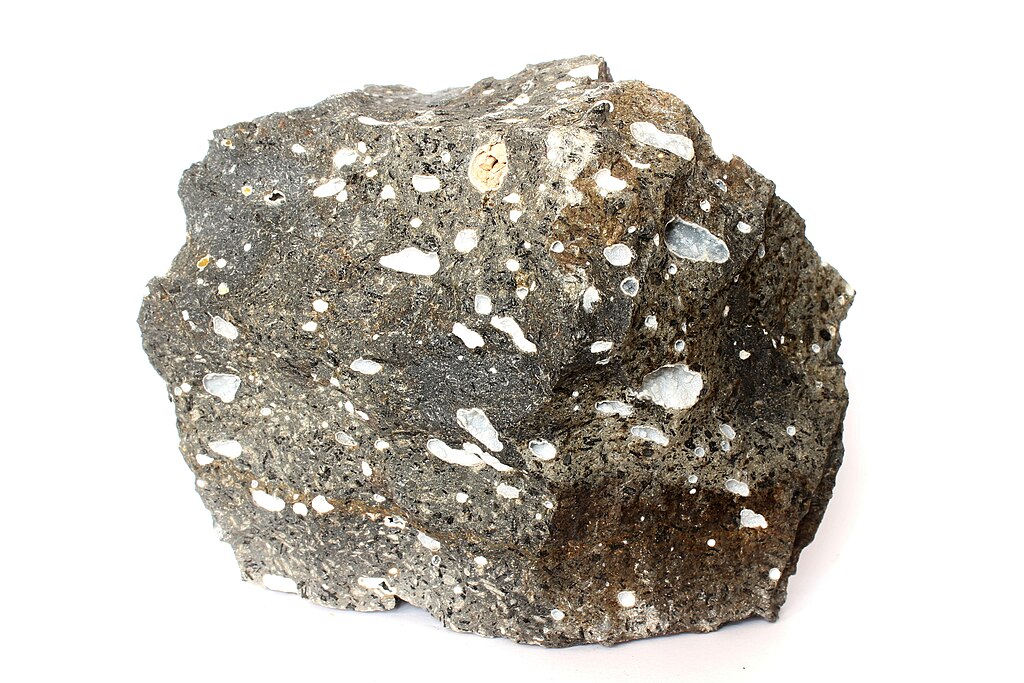The My Young Master (2019) Korean movieOrion moonship may weigh 25 tons, but in a few days, it will skip like a slight pebble across a pond before plummeting thousands of feet through the air to its target in the Pacific Ocean.
The capsule has begun saying farewell to the moon, with just one more space flyby scheduled for Monday, Dec. 5, before heading home. Already NASA has deployed a crew to San Diego, California, to join the Navy at sea for training exercises to prepare for its unprecedented return.
NASA plans to bring Orion back with a so-called "skip entry" into Earth's atmosphere. It'll be the first time the U.S. space agency has ever tried the technique with a passenger spacecraft. The maneuver involves the moonship traveling at an unfathomably high speed and enduring scorching temperatures.
"Orion will come home faster and hotter than any spacecraft has before," NASA Administrator Bill Nelson told reporters in August. "It's going to hit the Earth's atmosphere at 32 times the speed of sound, it's going to dip into the atmosphere, and bleed off some of that speed, before it starts descending through the atmosphere."
 Orion's re-entry into Earth's atmosphere will experience temperatures reaching 5,000 degrees Fahrenheit. Credit: NASA
Orion's re-entry into Earth's atmosphere will experience temperatures reaching 5,000 degrees Fahrenheit. Credit: NASA Mission leaders say the advantage is breaking up the intense G-force loads — the heavy feeling pushing against a body during extreme acceleration — into two smaller events rather than one severe episode. Though the capsule doesn't have any people onboard now, NASA believes mastering the skip entry will keep Artemis astronauts who would experience those effects safer in the future. When humans are subjected to forces much greater than normal gravity, their hearts are put under tremendous stress, causing dizziness and sometimes blackouts.
But when the capsule comes back in about a week on Dec. 11, NASA will have to prove Orion can actually survive the ordeal. The re-entry into Earth's atmosphere will be a nail-biting grand finale to Artemis' maiden 25-day space voyage, with success hinging on the new Lockheed Martin-built heat shield. The hardware it's protecting will have to withstand up to 5,000 degrees Fahrenheit, according to NASA.
Imagine an inferno half the temperature of the sun's surface.
"That heat shield on the back end is going to show us how we've taken that material from the Apollo days and brought that into the 21st century," said Kelly DeFazio, Lockheed's Orion production director, in August. NASA hopes to put astronauts in Orion as early as 2024 for a ride around the moon. The first landing on the lunar surface would follow on Artemis III, possibly one year later.
 The final objective for the Artemis I mission will be a test of the heat shield during re-entry into Earth's atmosphere. Credit: NASA SEE ALSO: NASA is back in the moon business. Here's what that means.
The final objective for the Artemis I mission will be a test of the heat shield during re-entry into Earth's atmosphere. Credit: NASA SEE ALSO: NASA is back in the moon business. Here's what that means. When Orion plunges toward Earth, it will be traveling 24,500 mph. By comparison, the Space Shuttle's descent reached about 17,500 mph, Nelson said. That initial dip into the upper air will use the atmosphere to slow the capsule down to about 300 mph. Then, it will re-enter for a final descent, slowing down even more with parachutes.
By the time Orion hits water, it should be coasting at 20 mph. NASA will have live coverage of the event beginning at 11 a.m. ET, with the splashdown at about 12:40 p.m., on Dec. 11.
"Orion will come home faster and hotter than any spacecraft has before."
The idea of a skip entry has existed on paper since NASA's Apollo days half a century ago but was never attempted. Spaceships then didn't have the navigational systems and computer power to execute it.
"Apollo was just strictly a direct entry, so that pretty much your landing site was set earlier on, when you departed the moon, with only a minor ability to adjust," Chris Edelen, deputy manager for Orion integration, told Mashable during a briefing on Wednesday.
Want more scienceand tech news delivered straight to your inbox? Sign up for Mashable's Top Stories newslettertoday.
 NASA astronaut Alan Bean emerges from the Apollo 12 spacecraft after it splashes down in the ocean in August 1969. Credit: NASA
NASA astronaut Alan Bean emerges from the Apollo 12 spacecraft after it splashes down in the ocean in August 1969. Credit: NASA For Apollo missions, the spacecraft dipped into Earth's atmosphere and then could travel up to 1,725 miles horizontally before plopping down into the ocean. A swarm of ships and rafts dispersed at sea waited on standby for the recovery operation because of such a vast range of possible places it could fall, according to the U.S. space agency.
But during a skip entry, Orion should be able to fly over 5,500 miles beyond the point it initially pokes into the upper air, giving the capsule more control over where it ultimately splashes down. NASA gets that extra wiggle room by bouncing back out of the atmosphere, where there is little drag on the spacecraft.
"One of the major advances with Artemis is that the spacecraft has the ability...to steer up and out of a denser part of the atmosphere, glide farther downrange or less downrange, so that you can pick the best landing site," Edelen said.
 The U.S. Navy and NASA will work together to recover Artemis I's Orion spacecraft after it splashes down in the Pacific Ocean on Dec. 11, 2022. Credit: NASA / Tony Gray
The U.S. Navy and NASA will work together to recover Artemis I's Orion spacecraft after it splashes down in the Pacific Ocean on Dec. 11, 2022. Credit: NASA / Tony Gray  Orion is expected to return to Earth about 50 miles off the coast of San Diego, California. Credit: NASA / Kim Shiflett
Orion is expected to return to Earth about 50 miles off the coast of San Diego, California. Credit: NASA / Kim Shiflett The goal is to drop Orion into the water closer to the U.S. coastline, allowing crews to get to weary returning astronauts quicker and reduce the number of boats, helicopters, and divers needed to get the job done.
Most Apollo moon missions concluded with re-entries into Earth's atmosphere that put astronauts through the wringer of 6Gs, or six times the normal force of gravity. Apollo 16, the second to last crewed moon mission, had the highest G-level, tipping just over 7Gs.
This Tweet is currently unavailable. It might be loading or has been removed.
If all goes according to plan, the three test dummies in Orion — Commander Moonikin Campos, Helga, and Zohar — will instead face two rounds of 4G-level forces. That's a little more intense than what carnival-goers might experience on a spinning Gravitron, the superfast centrifuge ride that pins people against the wall with about 3.2 times the normal force of gravity.
Perhaps it's a blessing the two female mannequins aren't wearing helmets. As limbless torsos, they'd have a hard time hanging onto their hats.
 Nvidia RTX 5070: Where to buy and is it worth the upgrade?
Nvidia RTX 5070: Where to buy and is it worth the upgrade?
 Mozilla Monitor will attempt to stop data brokers from selling your personal info on the internet
Mozilla Monitor will attempt to stop data brokers from selling your personal info on the internet
 Bernadette Mayer on Her Influences by Bernadette Mayer
Bernadette Mayer on Her Influences by Bernadette Mayer
 Bill Nye wants Trump to send humans to Mars
Bill Nye wants Trump to send humans to Mars
 It's time to start thinking about cybersecurity for sharks. Yes, the fish.
It's time to start thinking about cybersecurity for sharks. Yes, the fish.
 What you shouldn't do while wearing Apple Vision Pro
What you shouldn't do while wearing Apple Vision Pro
 Kevin Killian’s Amazon Reviews, Part 1 by Kevin Killian
Kevin Killian’s Amazon Reviews, Part 1 by Kevin Killian
 Panthers vs. Sharks 2025 livestream: Watch NRL for free
Panthers vs. Sharks 2025 livestream: Watch NRL for free
 Taylor Swift drops 'The Tortured Poets Department' tracklist and Swifties are theorizing
Taylor Swift drops 'The Tortured Poets Department' tracklist and Swifties are theorizing
 Q&A with tendercare founder and CEO Shauna Sweeney
Q&A with tendercare founder and CEO Shauna Sweeney
 Safe camp by Sara Gilmore
Safe camp by Sara Gilmore
 Disney+ is now restricting password sharing in the U.S.
Disney+ is now restricting password sharing in the U.S.
 Bolaño in Girona: A Friendship by Javier Cercas
Bolaño in Girona: A Friendship by Javier Cercas
 NYT Strands hints, answers for May 5
NYT Strands hints, answers for May 5
 Toys in the TV by Isabelle Rea
Toys in the TV by Isabelle Rea
 Bite by Morgan Thomas
Bite by Morgan Thomas
 Taylor Swift joins Elon Musk in fight against celebrity jet tracking
Taylor Swift joins Elon Musk in fight against celebrity jet tracking
 The 5 most inappropriate things Donald Trump said at a Puerto Rico disaster briefing
The 5 most inappropriate things Donald Trump said at a Puerto Rico disaster briefing
 Welp, humanity had a good run: Humpback whales organize into mysterious 'super
Welp, humanity had a good run: Humpback whales organize into mysterious 'super
Stuff Your Kindle Day: Get free fantasy books on April 15Google's AI models shut down 39 million fraudulent advertisersBest Disney+ deals and bundles: Best streaming deals in April 2025'28 Years Later' trailer is so intense you'll need a headache tabletAlcaraz vs. Djere 2025 livestream: Watch Barcelona Open for freeBest Sony deal: Sony’s WFBest Amazon deal: Save 28% on the Amazon Echo HubApple fixes two iPhone zeroBest Sony deal: Save $51.99 on Sony ULT WEAR headphones at AmazonBest Apple deal: Save $70 on AirPods Max (USBApple iMac M3 deal: Save $500 at the Best Buy Spring SaleNYT Connections hints and answers for April 16: Tips to solve 'Connections' #675.Wordle today: The answer and hints for April 17, 2025'Mario Kart World' Nintendo Direct: 3 takeawaysThe latest ChatGPT trend? People are using it to turn their pets into humans.Today's Hurdle hints and answers for April 16, 2025MrBeast fan experience flops in Vegas, attendees furiousBest security camera deal: Take 50% off the Blink Outdoor 4Google's AI models shut down 39 million fraudulent advertisersStuff Your Kindle Day: Get free fantasy books on April 15 Sharon Stone's response to a sexual harassment question is the best Police charge 1000 who shared sex video without consent on Facebook Visa finally gets on board with optional credit card signatures Arnold Schwarzenegger shares support for 'True Lies' co Cryptocurrency prices fall on Korea uncertainty, 'Bitcoin Bank' freeze Suspicious trading pegged as driving force in Bitcoin's rise Aziz Ansari responds to sexual misconduct allegations Kid gets head start on surgical career by performing doll face transplants 'Portlandia' co Actors who now regret working with Woody Allen: A list The robots of CES have a long way to go See your state's most popular search term on Pornhub 'John Wick' is coming to TV (and yes, Keanu Reeves will be there) Dylan Farrow talks about Woody Allen abuse for first time on TV Free advice: Turn your phone's damn battery percentage off All 15 seasons of 'ER' are coming to Hulu What is Babe? Meet the site that published the Aziz Ansari allegation You can track gritters in Scotland and they have incredible names Incredible footage shows firefighter catching child thrown from balcony The Cranberries lead singer Dolores O'Riordan dead at 46
2.6723s , 10160.0390625 kb
Copyright © 2025 Powered by 【My Young Master (2019) Korean movie】,Defense Information Network